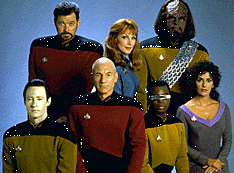 Future Directions
Future Directions Future Directions
Future Directions
Where are we headed?
At the end of 2001, Ethernet has been established to run at 1 Gigabit per
second. This new standard, designated 802.3z by the IEEE, is already specified
to run over UTP Category 5 enhanced cabling, and is becoming commonly and
inexpensively integrated into Network Interface Cards (NICís) today. As
networking concentrator gear decreases in price, this technology will
undoubtedly become very common.
 Gigabit Ethernet will permit very heavy use of bandwidth and should usher in a new era in telecommunicationsí innovation. But thatís not all, folks, because those crazy guys in the 10 Gigabit Ethernet Alliance are hoping to have the specifications complete for, not 1, but 10 whole Gigabits of Ethernet goodness ready for publication by the end of the second
Quarter, 2002. Commercial products from vendors like Cisco, Hewlett-Packard,
3Com, Extreme and Nortel will be close behind the standard to market. The
futureís so bright; gotta wear shades!
Gigabit Ethernet will permit very heavy use of bandwidth and should usher in a new era in telecommunicationsí innovation. But thatís not all, folks, because those crazy guys in the 10 Gigabit Ethernet Alliance are hoping to have the specifications complete for, not 1, but 10 whole Gigabits of Ethernet goodness ready for publication by the end of the second
Quarter, 2002. Commercial products from vendors like Cisco, Hewlett-Packard,
3Com, Extreme and Nortel will be close behind the standard to market. The
futureís so bright; gotta wear shades!
 On the protocol side of the fence, IPv6 (originally known as IPNG, after
Star Trek: Next Generation), is slowly being implemented. IPv6 creates whole
new classes of networks, expanding the current address space of TCP/IP with
improvements in routing configurations over the current version
(called IPv4). Both protocols will co-exist for the next few years, but expect
to see IPv6 at a network near you.
On the protocol side of the fence, IPv6 (originally known as IPNG, after
Star Trek: Next Generation), is slowly being implemented. IPv6 creates whole
new classes of networks, expanding the current address space of TCP/IP with
improvements in routing configurations over the current version
(called IPv4). Both protocols will co-exist for the next few years, but expect
to see IPv6 at a network near you.
Wireless networking has barely been mentioned, but expect to see 802.11b (11 Mb/sec) and 802.11a (54 Mb/sec) networks commonplace faster than you can say "brain cancer."